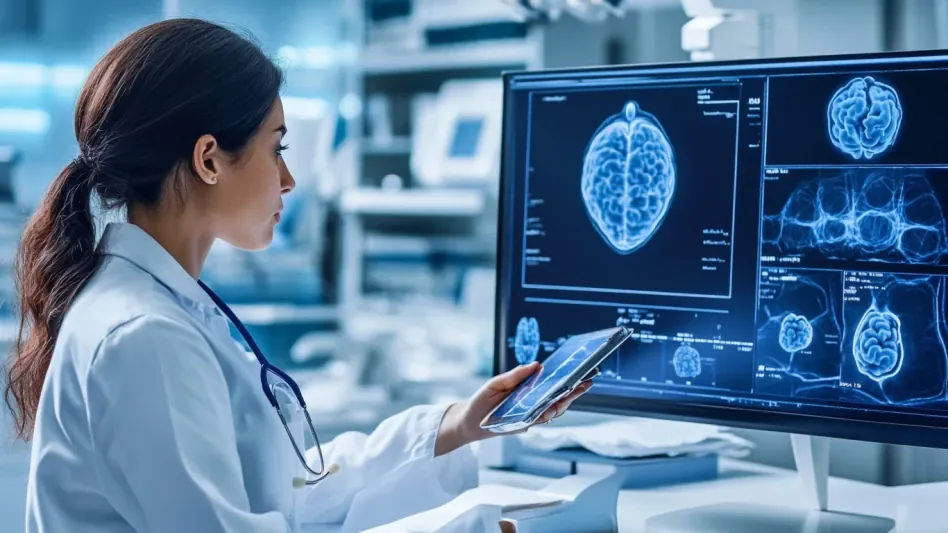The recent study led by Dr. Michelle Kang Kim highlights an innovative approach to predicting gastric cancer risk using electronic health records (EHR), offering a substantial breakthrough in cancer screening methodologies. Utilizing everyday clinical data, this model identifies high-risk individuals for noncardia gastric cancer (NCGC), potentially transforming early detection and improving patient outcomes. The potential to use EHR data for such predictive modeling marks a profound shift from traditional, often invasive and resource-intensive, screening methods. This groundbreaking approach stands to revolutionize patient care, making screenings more efficient, noninvasive, and accessible, thereby setting the stage for better prognosis through early intervention.
Utilizing EHR for Predictive Modeling
Traditional screening methods for gastric cancer are often invasive and resource-intensive. This study showcases the potential of an EHR-based model as a more efficient and noninvasive alternative. The use of EHR data could revolutionize early detection, crucial for enhancing patient care and outcomes. By analyzing regular clinical data, the predictive model provides a significant step forward in personalized medicine. This approach allows for early intervention, which is vital in preventing disease progression and achieving better prognosis. Hospitals and clinics adopting such models can allocate resources more effectively, streamlining the patient care process.
This innovative utilization of EHR is crucial given that early detection of NCGC drastically improves survival rates. Researchers suggest that the model can identify subtle health parameters and trends that may be overlooked in traditional screenings. Employing real-time clinical data analysis ensures that high-risk patients receive timely and appropriate interventions. It also implies that healthcare providers can leverage vast amounts of existing data for predictive purposes without requiring extra tests or procedures, thus reducing both patient burden and healthcare costs.
Methodology and Performance Evaluation
The study involved a sample of 614 NCGC patients diagnosed between 2010 and 2021, employing a 1:10 ratio of cases to controls. The investigators assessed the model’s performance using the area under the receiver operating characteristic curve and the 0.632 estimator, achieving a robust value of 0.731. This demonstrates the model’s capability in distinguishing between high-risk and low-risk patients accurately. Various thresholds were examined to maximize the model’s sensitivity and specificity, determining the precise balance between false positives and false negatives.
Despite different sensitivity and specificity values across thresholds, the model displayed a notable positive predictive value (PPV) of 1%, nearing the desired value for screening tests. Achieving this PPV at the study’s current stage is significant, as it underlines the feasibility and potential effectiveness of the EHR-based predictive model. This performance evaluation not only validates the model but also lays a solid foundation for its integration into routine clinical practice. By adjusting these thresholds, the model can be fine-tuned to improve its predictive accuracy further, ensuring optimal patient outcomes.
Identified Risk Factors and Clinical Implications
The study identified several risk factors for NCGC, such as older age, male sex, Black or Asian race, tobacco use, anemia, and pernicious anemia. Conversely, conditions like liver disease, hypertension, and hypercholesterolemia were associated with decreased risk. These discoveries provide invaluable insights that can guide clinicians in identifying high-risk individuals more accurately. Understanding these risk factors enables healthcare providers to prioritize patients who need further evaluation or immediate intervention, even if they display minimal or no symptoms.
These findings emphasize the importance of integrating predictive models into clinical practice. The model’s ability to identify high-risk individuals could revolutionize cancer screening, making it more precise and effective, aligning with the goals of personalized medicine. By focusing on a patient’s unique health profile gathered from EHR data, practitioners can offer customized advice and treatment plans, enhancing the overall quality of care. The integration of such models can lead to a proactive healthcare approach, where prevention and early diagnosis are paramount, ultimately improving patient outcomes significantly.
Broader Applications and Future Potential
Beyond gastric cancer, the methodology holds promise for predicting risks for various other diseases. Leveraging EHR data could significantly enhance patient outcomes across multiple medical fields, addressing the global rise in gastric cancer cases and the need for reliable risk prediction models. The principles underlying this EHR-based model can be adapted to other conditions, providing a comprehensive tool for early detection in a range of diseases. This potential for broader application positions the model at the forefront of predictive medicine, indicating a new horizon where data-driven insights can lead to personalized and preventative healthcare.
Dr. Kim and Dr. Rashmi Advani, who provided additional insights on the study, highlighted the broader implications and potential of this research. Their optimism reflects a broader vision for future applications of EHR-based predictive modeling in healthcare. This pioneering work signifies a step towards integrating data science into healthcare infrastructure globally. As the model evolves and improves, its adoption could lead to systematic changes in how diseases are screened and managed, making healthcare systems more responsive and patient-centric.
Optimism and Future Directions
The recent research spearheaded by Dr. Michelle Kang Kim introduces a groundbreaking method to predict gastric cancer risk using electronic health records (EHR). This novel approach represents a significant advancement in cancer screening techniques. By leveraging routine clinical data, the model effectively identifies individuals at high risk for noncardia gastric cancer (NCGC). This innovation has the potential to revolutionize early detection, substantially enhancing patient outcomes. By utilizing EHR data for predictive modeling, there is a shift away from traditional, often invasive and resource-intensive, screening methods. This breakthrough approach could profoundly impact patient care, making screenings more streamlined, noninvasive, and broadly accessible. The increased efficiency and accessibility pave the way for improved prognosis through earlier intervention. As a result, the future of cancer screenings may become more proactive, focusing on preemptive care and leading to better health outcomes for patients.









